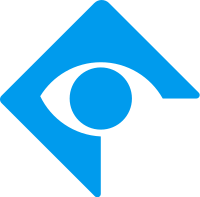

You can help expand this article with text translated from the corresponding article in Persian. Click [show] for important translation instructions. Content in this edit is translated from the existing Persian Wikipedia article at [[:fa:شبکه یک]]; see its history for attribution.{{Translated|fa|شبکه یک}} to the talk page. |
 | |
| Type | Broadcast television network |
|---|---|
| Country | Iran |
| Headquarters | Tehran |
| Programming | |
| Language(s) | Persian |
| Picture format | 16:9 (1080p, HDTV, 576i, SDTV) |
| Ownership | |
| Owner | Islamic Republic of Iran Broadcasting |
| Key people | Peyman Jebelli (Director-General) |
| History | |
| Launched | 21 March 1958; 66 years ago (1958-03-21)[1] |
| Former names | TVI (1958–1969) |
| Links | |
| Website | tv1 |
| Availability | |
| Terrestrial | |
| Jamaran | CH37 UHF Digital |
| Streaming media | |
| IRIB TV1 Live Streaming | |
IRIB TV1 (Persian: شبکه یک, Shabakeh-e Yek, lit. Channel 1) is one of the 40 national television channels in Iran.
IRIB TV1 was the first national television channel in Iran, and is now the oldest Iranian television channel having been established in 1958. The channel is referred to by some as the National Channel, as most of Islamic Republic of Iran Broadcasting's television budget is set aside for this channel.
The channel has a wide range of programming such as drama series, television premieres of major Iranian movies, and talk shows. Children's shows also air in reruns, but most of them air first-run on IRIB TV2's youth programming block. The channel also has the most watched Iranian news broadcast and televises the Friday prayers. The channel televised major sporting events until IRIB TV3 attained the rights for those broadcasts, as well as numerous viewers.
This channel has been subjected to human rights abuses by airing forced confessions on live television.[2]
The station was founded in 1957 as a private entity by the Sabet family, a renowned family of merchants, who operated Television of Iran (TVI), the first commercial TV company in the Middle East. Habib Sabet, who represented RCA in the country, was its owner. The station would include local content and foreign productions from the United States and Europe.[3] Its broadcasts started on March 21, 1958 on channel 2 in Tehran.[1] The building was dedicated by Shah Mohammad Reza Pahlavi on October 3, 1958. Its first manager was RCA engineer A. Vance Hallack, who also managed Television of Baghdad, the first in the Middle East, and television demonstrations in Jakarta and New Delhi. By October, the station moved frequencies, from channel 2 to channel 3, broadcasting four hours a night.[4] TVI operated two stations: TVI-TinTehran and TVI-AinAbadan.[5]
As of 1964, over 80,000 television sets received its signals, and the possibility of opening up a second channel would increase the amount of foreign content, which was already present on the existing service - the majority of which came from the United States, who also supplied television equipment. TVI was also subject to censorship by the Department of Publications and Radio.[6] In the summer of 1965, the station in Tehran received technical assistance from Richard L. Spears to improve its technical capabilities and ad revenue. His reforms included a new nightly news program and a new slogan ("dedicated to the progress of Iran").[7]
At its launch, TVI had the sponsorship of numerous blue chip Western companies, RCA, General Tire, Pepsi-Cola, Autolite, Squibb and Volkswagen, with Sabet having opened the first Pepsi-Cola plant in Iran in 1955.[8] However, by 1963, it claimed to have lost 70 million rials, and its owners attempted to sell the station to the government, but by then it had already approved plans for its own television network.[9]
The Iranian government were concerned over the commercial nature of the service, which promted action to introduce educational programming. There were talks to become a part of the Department of Publications and Broadcasting, which would eliminate commercial advertising.[10]
TVI was nationalized in late April 1969.[11] Around that time, its coverage area expanded far beyond the two initial cities.[12] NITV on channel 3 conserved much of the output of the former TVI, broadcasting on two periods – a noon period and an evening period that ran from 6pm to around midnight.[13] In 1971, it became a part of NIRT.
After the Islamic Revolution of 1979, IRIB took over NIRT's operations.
The logo of the channel is partly taken from the IRIB logo, which is the shape between the『لا』signs (referring to the slogan "neither West, neither East, the Islamic Republic"). This shape alone consists of two square shapes, in the outer part and circle in the inner part. The square shape gives a sense of dynamism to the brand and the circular shape gives the notion of vision. The channel uses turquoise blue as its signature color, which is evocative of Iranian architecture and representative of its civilization.[14]
|
IRIB television channels
| |||||||
|---|---|---|---|---|---|---|---|
| Domestic channels |
| ||||||
| Other channels |
| ||||||
This article about a television station is a stub. You can help Wikipedia by expanding it. |
This article about mass media in Iran is a stub. You can help Wikipedia by expanding it. |